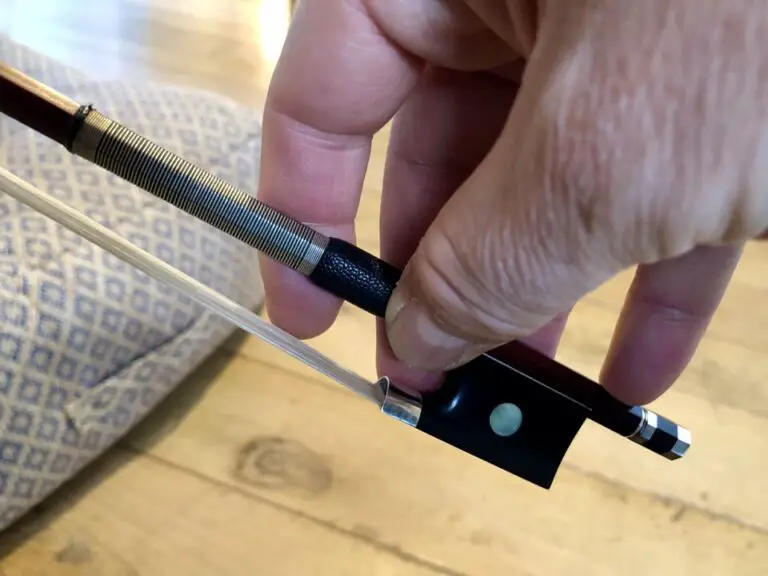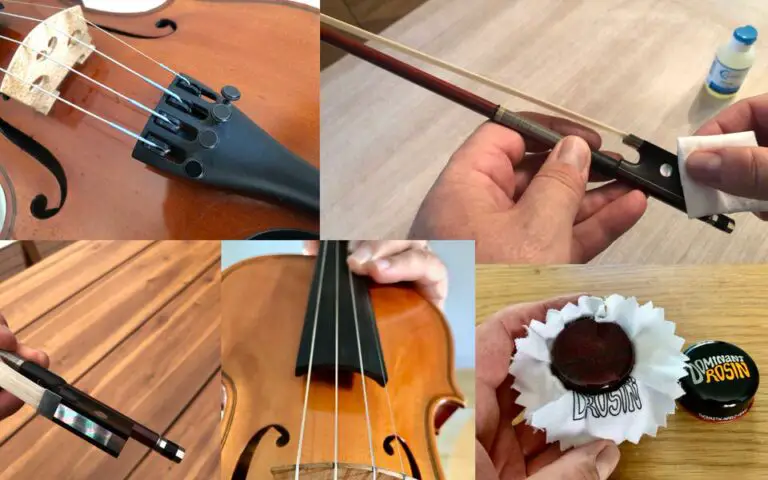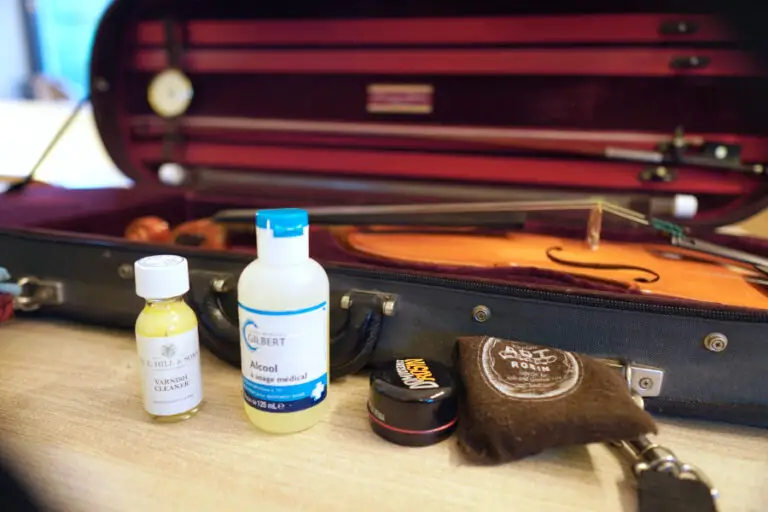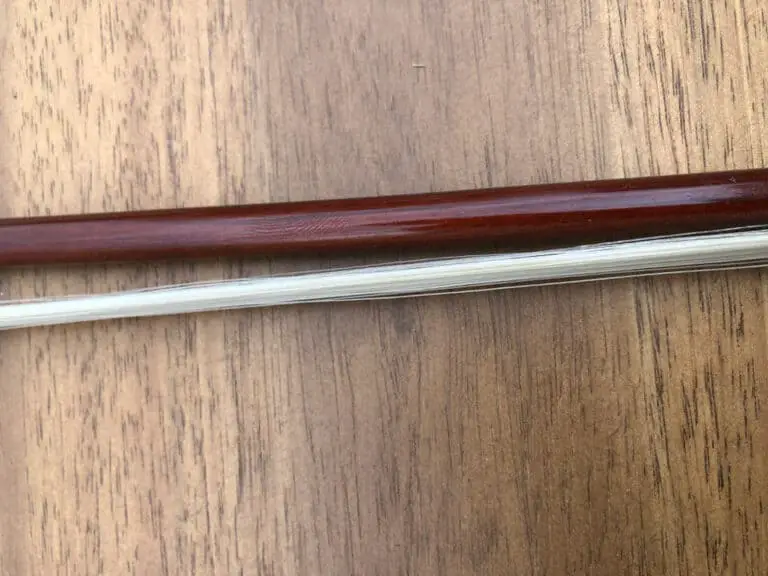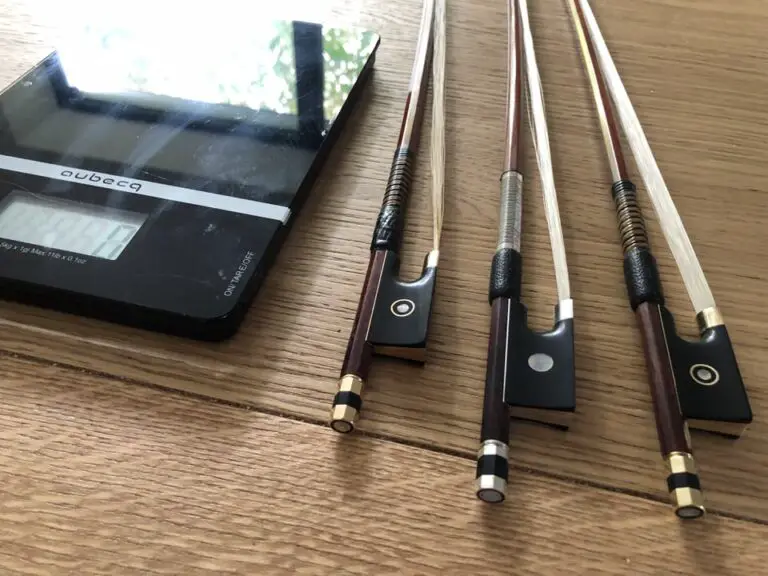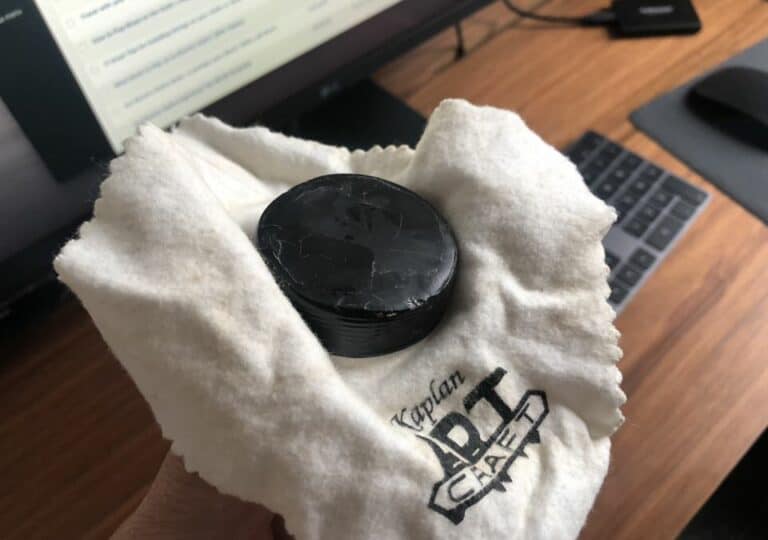How to Store a Violin Bow? Don’t Make these Mistakes
The bow is made out of wood, hair (horsetail hair), and the frog is mainly made out of ebony. The wooden stick is delicately cambered with heat. So, what do we have to preserve when we store our bow?
You need to preserve the wood and camber of your bow, as the hair will likely have to be changed anyway. Clean thoroughly and oil the bow with a product from your bow-maker before storing it. Loosen the hair to the maximum. Put some grease on the thread of the screw. Then store your bow in a strong bow case. Store the case in a climate-controlled room.
If you want to get back a bow in its best condition and preserve the value of your investment if your bow is particularly valuable, there are many tricks that I have detailed that are particularly interesting and easy to implement.
How to store a violin bow between playing sessions
The bow is a crucial part of violin playing: it isn’t an accessory of the violin. It is an instrument in its own right. Even if the wood is hard and sturdy (Pernambuco, Brazilian wood), the stick is made so thin that the risk is great to break the bow if we aren’t careful enough.
Between sessions, the bow should be stored in a safe place at all times. Even if it is tempting to put your bow on a piano, on a shelf, etc. without protection to be fast, this is to avoid because it is so easy to damage it. It might break if it is dropped; if the hair is stained, you won’t be able to play. You can always clean the hair with alcohol and apply some new rosin, but it is a long and tedious process and is not recommended. It is not good for the hair.
1. Clean your bow each time you store it
So, every time you have finished playing, always clean your bow. Before loosening it, you still have room to wipe the wood between the hair and the stick. That part of the bow is always covered with rosin. Do not apply too much force. Then, with another cloth, clean the part of the stick which is not in contact with the hair. Then, with some alcohol, clean the button, lapping, and padding. Wipe those parts with a clean cloth (not the one that has served to wipe off rosin!). Now that your bow is clean, you can store it.
2. Loosen your bow every time you have finished playing
Always loosen your bow. It is made out of wood and shaped into a convex form to hold the hair in tension. It is not designed to be left tense indefinitely: the wood will eventually lose its shape and the bow its bounciness. So, even for a short time, you should always loosen your bow. It is not as important as when your store your bow for the long term, for sure, but you still have to make sure that your bow is loosened correctly and that isn’t any tension left.
This tension-less resting state is good for the hair as well. It will last longer.
3. Always store your bow in a case
Do not leave your bow anywhere, where it can get damaged. Put it in your violin case, well secured. If you do not fix it properly, it might fall, even so slightly on your violin when you open your case and damage the varnish.
I always recommend putting your bow in the case with the stick up (and hair down). That way, you won’t be spreading that much rosin on the wood.
How to store your violin bow for the long term at home
When you store your bow between playing sessions, you can perfectly use your violin case. But if you store your bow long-term and you know that you won’t be touching it for a while, then you should use a special case, a case for string instruments bows.
1. Preserve the wood of your bow before storing
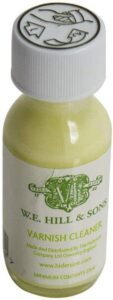
Before you store your bow, you should protect the wood. Let’s assume your bow is clean. If you want to avoid mold on the wood of your bow, clean it before storing it with oil from your bow-maker, or even with Hill and Son’s product, for violin, which can be found cheaply on Amazon. Just put a tiny bit to create a thin hydrophobic layer on the wood and prevent stains of mold. I have used both, but I prefer asking for a small bottle of special sauce for my bow-maker.
You can use a silky back, inside the case, to further protect the bow. I have seen violinists do that, but I haven’t myself.
2. Chose a special case for your bow
For that matter, the case is ideal because your bow will be protected and untouched, and you will still be able to use other violins and bows in the meantime.
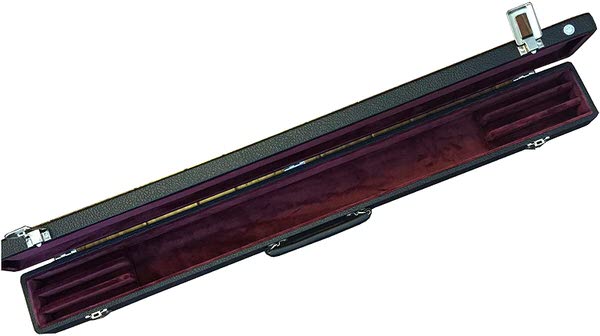
This case can contain three bows, whether for violin, viola, or cello. It is of good quality and I have been pretty happy with it. Its box-like shape makes it easy to store. It is not too expensive for its quality now on Amazon, and you can even fit some desiccant inside if the room is humid.
You can prefer a smaller case for individual bows, in case you want to take your bow with you to have it inspected by your bow maker, re-haired… This case is lighter, for example, and comes in handy with straps. It is made out of carbon fiber and is strong and sturdy. It is cheaper, and also contains two bows. It can be a preferable option for someone who wants to store bows but also to carry them on a regular basis.
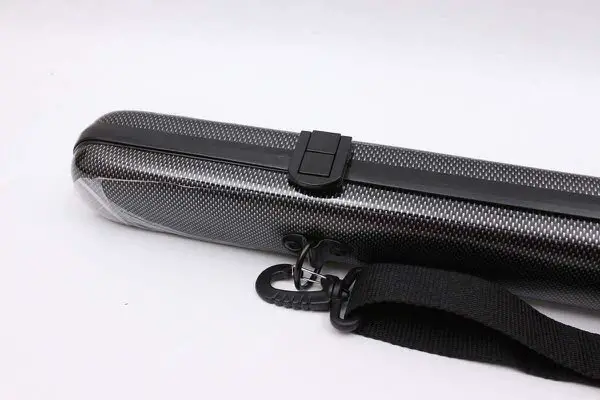
My violin Master was obsessed with bow technique and, maybe as a consequence, was in love with bows. He used to carry bows all the time to show them to me and have me try them. A good violinist should always have many bows, depending on the type of tune to play, the musical style, the technique to use, the sound to look for. So storing bows is part of the life of a true violinist (if there is such thing as a true violinist).
3. Monitor the hygrometry of the room
With a hygrometer, check the humidity of the room. If it is too dry, you can use a Dampit to humidify the air of the case. Bow hair prefers an atmosphere too humid to too dry. If you store your bow for a couple of months, you will be able to play it without much maintenance. But if you take your bow again after several years, you will need to re-hair your bow anyway.
Try to always store your bow in a climate-controlled room where there are a few differences in temperature and hygrometry as possible.
But in any way, you should check your bow every couple of months to check its condition and to wipe and clean it.
4. Loosen your bow to preserve its camber
The bouncy ness of the bow is a crucial quality to keep and maintain. That is why it is important to always loosen the bow hair. Doing so, you relieve the tension of the bow, and the stick finds back its original convex camber.
To be extra sure, loosen the bow as you normally do and then a bit more to be extra sure. The differences in temperature and hygrometry can affect the stick and tighten the bow again a little bit. That is why we need to make sure that the bow is completely loosened. The hair should not have any shape left; you should be able to see the individual hairs.
If you store the bow without any tension, even so small, the stick will live its life and naturally react to temperature and hygrometry. Then, when you will reopen the case, the stick will be in perfect condition.
5. Loosen your bow to preserve its hair
Prepare to change bow hair: like human hair, bow hair is sensitive to atmospheric conditions, becomes dry, brittle. The scales have closed down and don’t grab the string and hold the rosin as much.
The hair ages better without tension as well. It is the only way to avoid finding too many broken individual hairs. Even a small amount of tension is enough, if we store a bow for a long time, to stretch and damage the hair. Plus bow hair is made out of some kind of natural living material. It is not like nylon. A dry atmosphere affects bow hair, and the hairs break easily.
6. Take care of the mechanical parts part of your bow before storing it
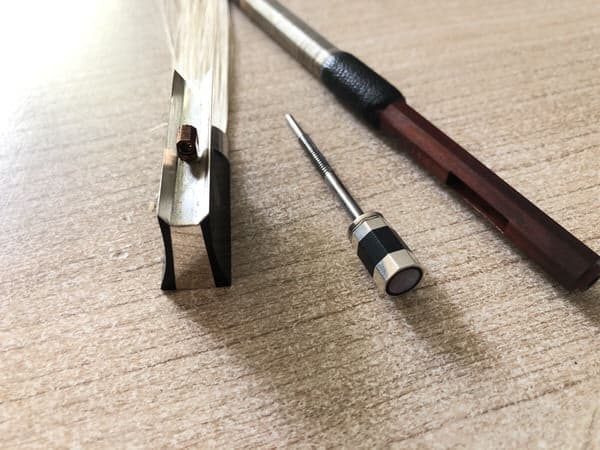
If you plan to store your bow long-term and get it in good condition when you get back to it, then you should do some preventive maintenance. If there is some humidity, the screw of the button can become rusty. It will be hard to turn, and even damage the eyelet: even if the eyelet is often made of brass, the screw itself is made of steel.
So unscrew the button and put a bit of thin grease or lubricant on the screw before putting it back on. You will find it in perfect condition without rust and it will be easy to operate. Be careful not to stain the wood with too much grease, though.
Now that you know how to store your bow properly, read my advice on how to store your violin here.
How to put your violin bow back into service after a long storage
1. First, check the screw
If you have put grease on the screw before storing your bow, then it should be in perfect condition. Unscrew the button anyway, check the screw, and put some lubricant if needed (just a little bit).
2. Check the hair of the bow
Prepare to change bow hair: like human hair, bow hair is sensitive to atmospheric conditions, becomes dry, brittle. The scales have closed down and don’t grab the string and hold the rosin as much.
Some bow hairs, or even many of them, must be broken. This is normal. When stored, and with the time passing by, the hairs become dry and brittle. If your bow has been stored for a couple of months, let’s say up to six, and if not too many hairs have broken, no more than ten, then your hair is good for service, as long as you are not an international virtuoso. Shake the bow, make big movements in the air to try to take out the old rosin. Wipe off as much as you can with a cloth that you’ll have to clean in the washing machine (you do not want to keep a cloth with old rosin on it. It will be useless to clean anything afterward). Then slowly and meticulously apply new rosin on the hair.
In any other case, it is time for a re-hair. You will enjoy new hair, with the maximum number of hairs, well spread out, with new rosin, and in new condition: you will get the best sound. Your bow maker will clean the stick with its magical lotion and will oil a little bit of the wood to protect it. You are now ready for many hours of playing.
Further your skills and knowledge and read my violin and bow maintenance mega guide.

